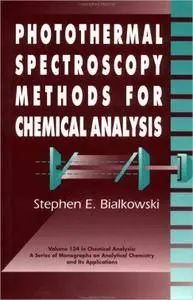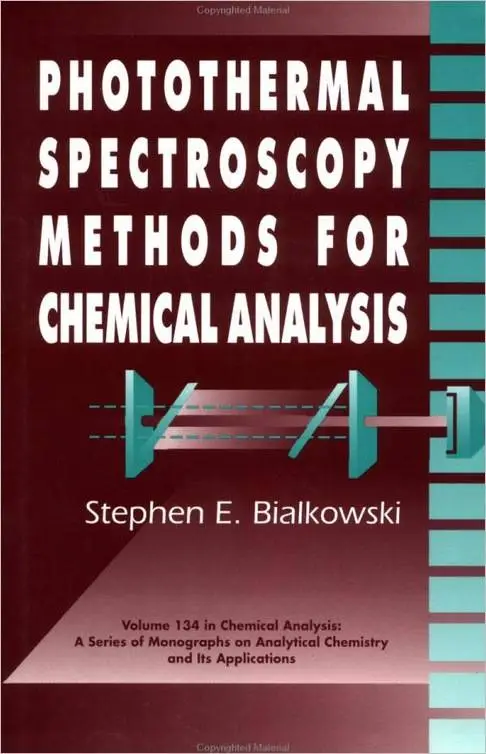Photothermal Spectroscopy Methods for Chemical Analysis
by Stephen E. Bialkowski
English | 1995 | ISBN: 0471574678 | 584 pages | PDF | 20.61 MB
by Stephen E. Bialkowski
English | 1995 | ISBN: 0471574678 | 584 pages | PDF | 20.61 MB
A unique guide to the application and theory of photothermal spectroscopy.
This book debunks the myth that photothermal spectroscopy is too complicated for practical application to chemical analysis, and demonstrates the advantages this technique has over conventional spectroscopy in facilitating extremely sensitive measurements of optical absorption in homogeneous media. The book covers the subject from the ground up, lists all practical considerations needed to obtain accurate results, and provides a working knowledge of the various methods in use–including photo acoustics and photopyroelectric techniques.
Bringing together a wealth of information that has been scattered throughout the professional literature, Photothermal Spectroscopy Methods for Chemical Analysis covers methods and information that should be known to every analytical chemist, including:
* Descriptions of photothermal spectroscopy using a consistent mathematical language
* Helpful examples from the literature of analytical applications and current research
* Illustrations of all important points, consistent equations, and numerous original figures
* A discussion of laser technology and how it is used to obtain accurate results from extremely small samples of a few molecules
* Everything spectroscopists need to know to construct their own apparatus and use it to conduct successful experiments
* Tips on how to interpret experimental results effectively when using nonlinear processes and in many other situations in photothermal spectroscopy
* Considerations for further study of heterogeneous sample analysis
* Unified nomenclature of the patchwork of terms used by researchers in analytical and physical chemistry, physics, and optical engineering
* Equations that are derived with the aid of a symbolic language processor to ensure correct results
Photothermal spectroscopy has seen major advances since the advent of laser technology twenty-five years ago. It is now possible, using a laser's coherent and powerful output, to obtain extremely sensitive measurements of optical absorption that exceed those of mass spectroscopy by two or three times, and produce accurate results from only a few molecules.
Focusing on samples in homogeneous media, this book provides a unique guide–incorporating theory and application–to all available photothermal spectroscopy techniques for chemical and material analysis. It uses a systematic approach in its comprehensive treatment of the theory, and covers all the necessary background material, from laser optics to fluid dynamics.
This accessible text describes the various processes used to detect thermal perturbation of a sample, ranging from optical excitation to nonlinear processes, and covers all optical principles necessary to understand photothermal spectroscopy. When dealing with hydrodynamic equations that govern energy transfer in the sample matrix, it provides an original impulse-response approach. In addition, the book explains how to construct the apparatus one needs to conduct successful photothermal experiments, since commercial equipment is not available as in conventional spectrophotometry.
Throughout, this book draws on information from a wide range of fields, including analytical spectroscopy, measurement physics, physical optics, and chemical dynamics. Providing clear explanations at every turn, the author demonstrates a complete understanding of the theory and applications as a firm basis for the correct interpretation of experimental results.
For analytical chemists, as well as for students at the graduate level, Photothermal Spectroscopy Methods for Chemical Analysis is an unmatched resource that develops a consistent mathematical basis for signal description, consolidates previous theories, and provides invaluable insight into laser technology.
quality: scan



